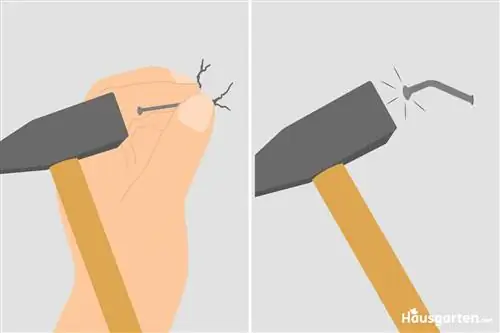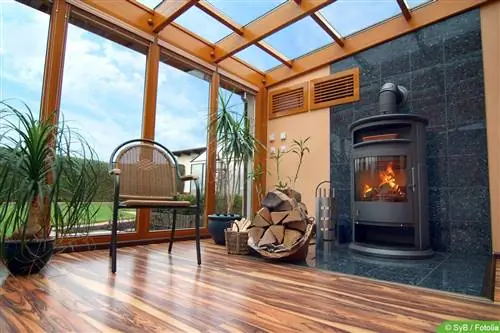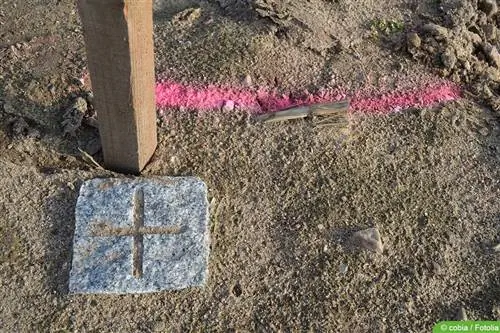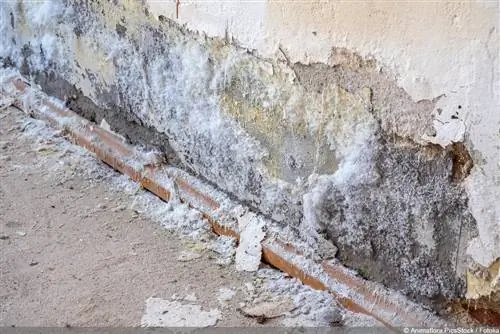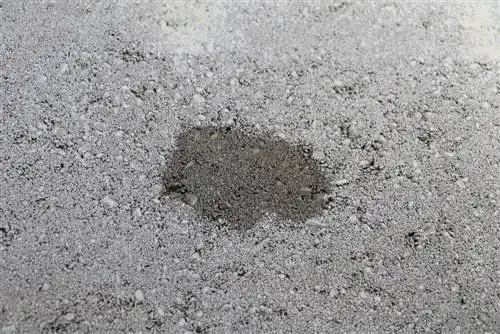- Author admin [email protected].
- Public 2023-12-17 03:39.
- Last modified 2025-01-24 12:45.
You notice moisture damage on your interior walls and wonder, what now? Do you need to renovate or even completely modernize so that moisture doesn't build up even more in the walls? This is a serious problem that needs to be addressed immediately to prevent it from getting worse and increasing costs. This is particularly important for apartments in apartment buildings.
Causes
Moisture damage in the wall is a delicate matter as it often takes weeks, months or even years to become visible. It may be that water has been running in a small trickle into your walls for several months and you only notice it when large stains appear on the wall or mold appears. For this reason, the damage is usually quite extensive, as the water sneaks its way in and literally surprises you. The following causes may be to blame for the problem:
1. Construction defects: One of the most classic reasons why too much moisture accumulates in the interior walls is construction defects. Even an incorrectly placed stone, insufficient mortar or sufficient insulation material can cause water to draw into the masonry and condense there and migrate upwards or collect in the basement walls. Also typical are problems with heating and water pipes, where even the tiniest crack can cause major problems. If the masonry of the house is not properly sealed, moisture from the earth will penetrate into it and cause problems.
2. Ventilation and heating:This cause has nothing to do with construction defects or with the building itself. The rhythm of ventilation and heating, moist and dry air, is essential to ensure that indoor humidity does not get out of control. If you don't ventilate enough and also create permanent high humidity, you have to expect damage.
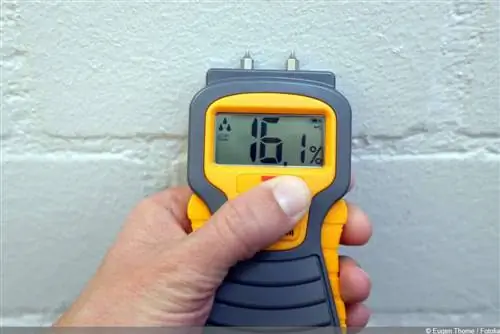
Typical causes for this are:
- Cooking
- frequent bathing or showering with the bathroom door open
- Plants that need frequent water spraying
- high temperatures
- Exhalations from humans and animals
- Wash and dry laundry, especially in the kitchen
- frequent use of the kettle
These are just a few examples of why a lot of moisture can accumulate if you don't ventilate enough or the temperature is constantly too low or too warm. The moisture has to go away somehow. Dehumidifiers can help if the humidity is too high, while air conditioning systems often ensure good air exchange. Nevertheless, the damage is just as bad as with other causes, even if it is somewhat easier to repair.
3. Problems with the horizontal barrier: The horizontal barrier is a barrier in the foundation of the building that prevents groundwater or soil moisture from the surrounding earth from penetrating the masonry. If you live in a new building, you don't actually have to worry about a problem with the lock as they are usually up to date. Older buildings, on the other hand, are often poorly sealed and it can often happen that there are either problems with the horizontal barrier or it is so old that it only works poorly.
If there are construction defects and problems with the horizontal lock, you cannot do anything yourself, as these causes lie deep in the building itself and must be taken care of by a specialist. You can only counteract incorrect ventilation and heating in advance, as if there is a problem with damp interior walls, this must first be remedied, for which a specialist will also be called in. As soon as you notice damp interior walls, you must proceed as follows:
- determine whether mold has formed
- investigate the extent of water damage
- As soon as you live in an apartment building, you can ask your neighbors whether they have similar problems
- then contact a specialist for moisture and mold damage
- Alternatively, you should contact an expert, for example from TÜV
- this also takes care of the damage analysis

During the damage analysis, for example, the extent and intensity of the damage and other defects are recorded and further steps are then taken to get the problem under control. When determining the damage, it is also determined whether external influences caused the condition. In some cases, this can lead to quite high costs, as removing the damp walls is not an easy and, above all, a time- and labor-intensive project. Different methods are used for each form of damage, while following the following process:
- the method is selected according to the damage
- The masonry must then be laid dry
- Seals and other components of the walls can then be replaced
- This is followed by, for example, wallpapering or something similar
You see, damp interior walls are not exactly easy to deal with and in the worst case scenario you will have to pay a lot to fix this problem. In most cases, subtenants do not have to do this unless they are clearly the cause of the excessive moisture and therefore have to cover the costs of renovation.
Tip:
If you own a property, you should take action against damp interior walls as quickly as possible to prevent the building from losing value. As a landlord, this should be done even more quickly, as mold growth can even threaten rent reductions if the he alth of your subtenants is negatively affected.
Mechanical horizontal seals
Horizontal waterproofing is one of the three categories of methods used by specialist companies to eliminate the problem. While private individuals can only do something about moisture in living spaces through extensive ventilation and dehumidifiers, companies use special procedures to thoroughly dry the masonry again. The following three methods are available under this category:
1. Chrome steel sheet process:This process is only used for masonry that has a continuous bed joint. For this purpose, the specialist uses a single or several corrugated sheets, which are pressed into exactly this joint with a lot of pressure. For this reason, another name for this method is the so-called “piling method”. The sheets ensure that no further moisture can rise and also push the mortar up and down, which strengthens the seal. The sheets are not only corrugated, but also wedge-shaped to enhance the effect.
2. Wall sawing technique: When sawing the wall, something is also placed in the wall, but a cut must be made beforehand. For this reason, the process is particularly suitable for masonry that does not have a horizontal joint. For the cut, which is carried out horizontally, the following types of saws are usually used, depending on the type and thickness of the masonry:
- Circular saw
- Cable saw
- Circular saw
- Swordsaw
This allows the cut to be made quickly and effectively so that either a sealing film or bitumen membrane can be integrated into it. If cuts are made on both sides, sealing slurry is used for this.
3. Wall replacement process: As the name suggests, this involves replacing all damp stones, which are then replaced with new ones. A maximum of one square meter of masonry is removed and replaced. At the same time, horizontal barriers are integrated, as these can usually be the cause of this damage.
Chemical and physical horizontal seals
These variants make the most use of resources that are easy to use. With these procedures you can see exactly how different the results are. The following procedures are available:
1. Injection (unpressurized): These seals are small holes that are made into the masonry and then filled with sealant. The agent is then distributed throughout the wall and dries it from the inside.
2. Pressure injection: Pressure injection is exactly the same process as non-pressure injection, except that the sealant is distributed via a machine. This increases the accuracy of the products and pressure injection is in itself a good method for quickly and easily drying the masonry again.
3. Electrophysical wall drying:With electrophysical wall drying, the water is prevented from moving, which ensures that it condenses and disappears over time. To do this, electricity is directed near the water via the apparatus, which creates a voltage that keeps the moist water in one place. This allows the masonry to dry out without actually changing anything on the masonry.
Vertical sealing
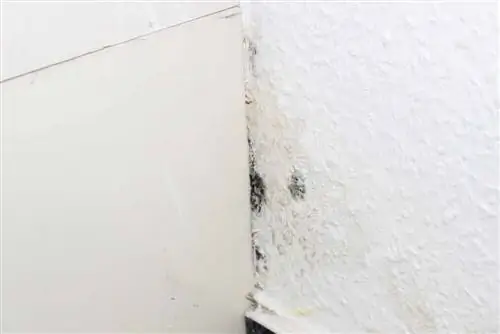
Unlike horizontal seals, vertical seals are not designed to stop water from below or above. They are primarily used to protect against moisture coming from the side. In a cellar, for example, this is the soil, the moisture from which is then released into the masonry. The following two methods are used for this method:
1. Internal sealing: The internal sealing works wonders together with the external sealing and ensures that water does not get into the masonry. Barrier plaster or sealing slurry is used for this. For this variant, the wall must be completely dry before it can be processed further.
2. Exterior sealing:With this process, everything is completely sealed. For this purpose, special plastic sheets are used for sealing or thick bitumen coatings, which are just as suitable for this purpose. The specialist will expose almost the entire wall for this process, especially the foundation and use several layers of insulation material so that they can be used immediately after the wall has dried.


